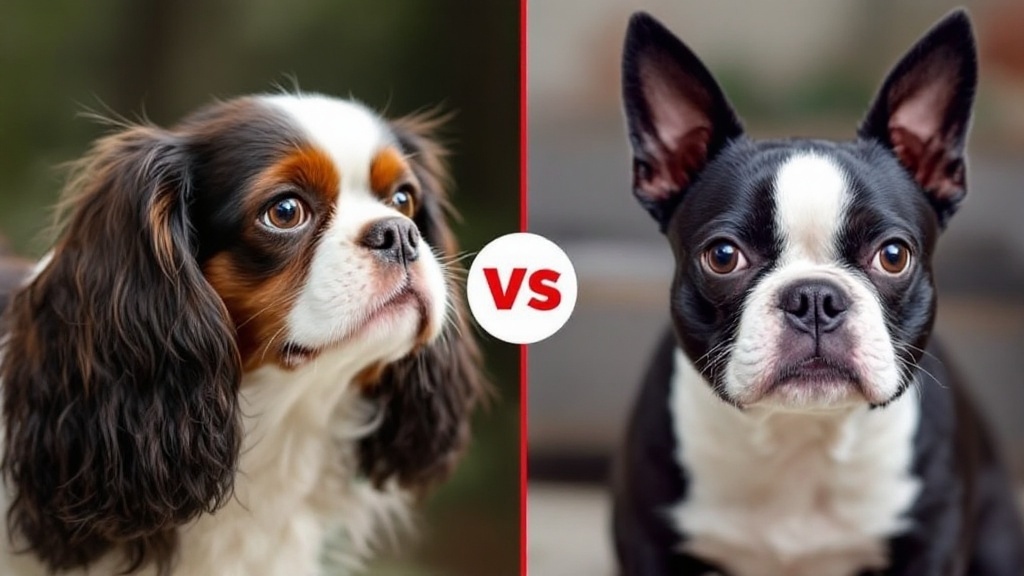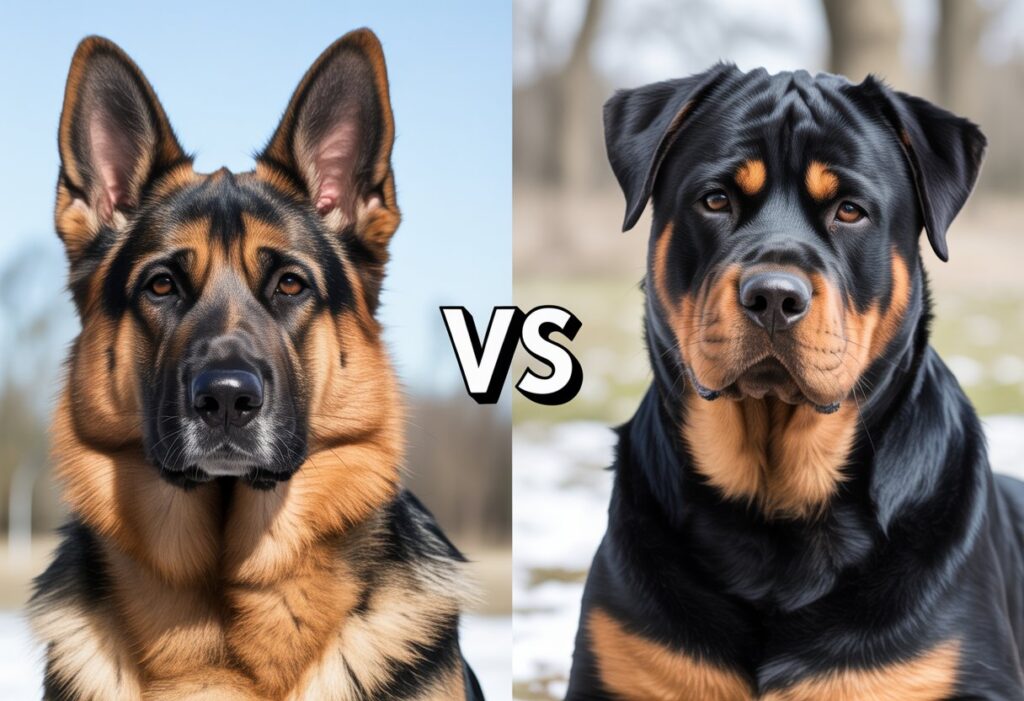If you’re torn between the Cavalier King Charles Spaniel and the Boston Terrier, you’re probably looking for a dog that fits your vibe and lifestyle.
Both breeds have a reputation for friendliness and make great companions, but they’re not quite the same. The Cavalier King Charles Spaniel is gentle and affectionate, while the Boston Terrier is playful and energetic.
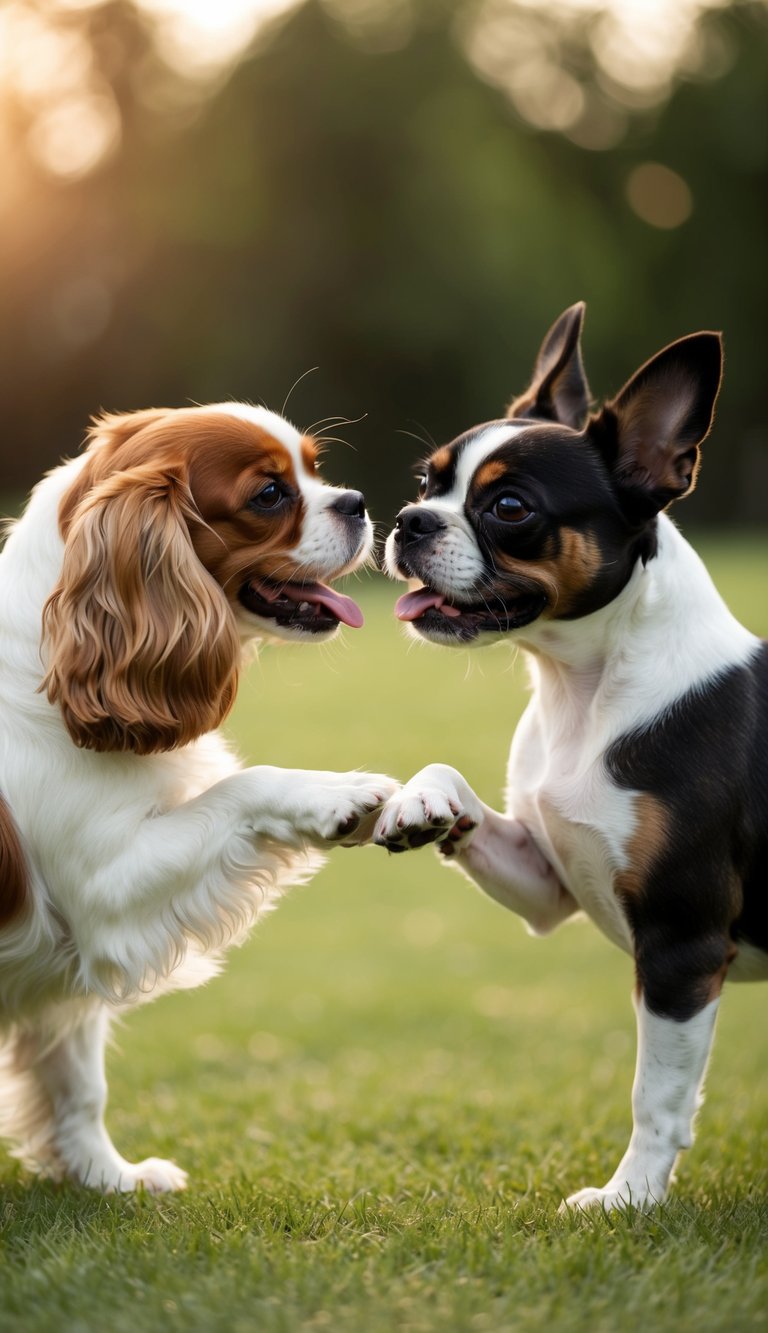
Cavaliers tend to be more relaxed, while Boston Terriers usually bounce around with higher energy. That can make Bostons a good fit for active families.
If you want to dive deeper, you can compare their traits directly on sites like Dogell or Dog Learn.
Breed Origins and History
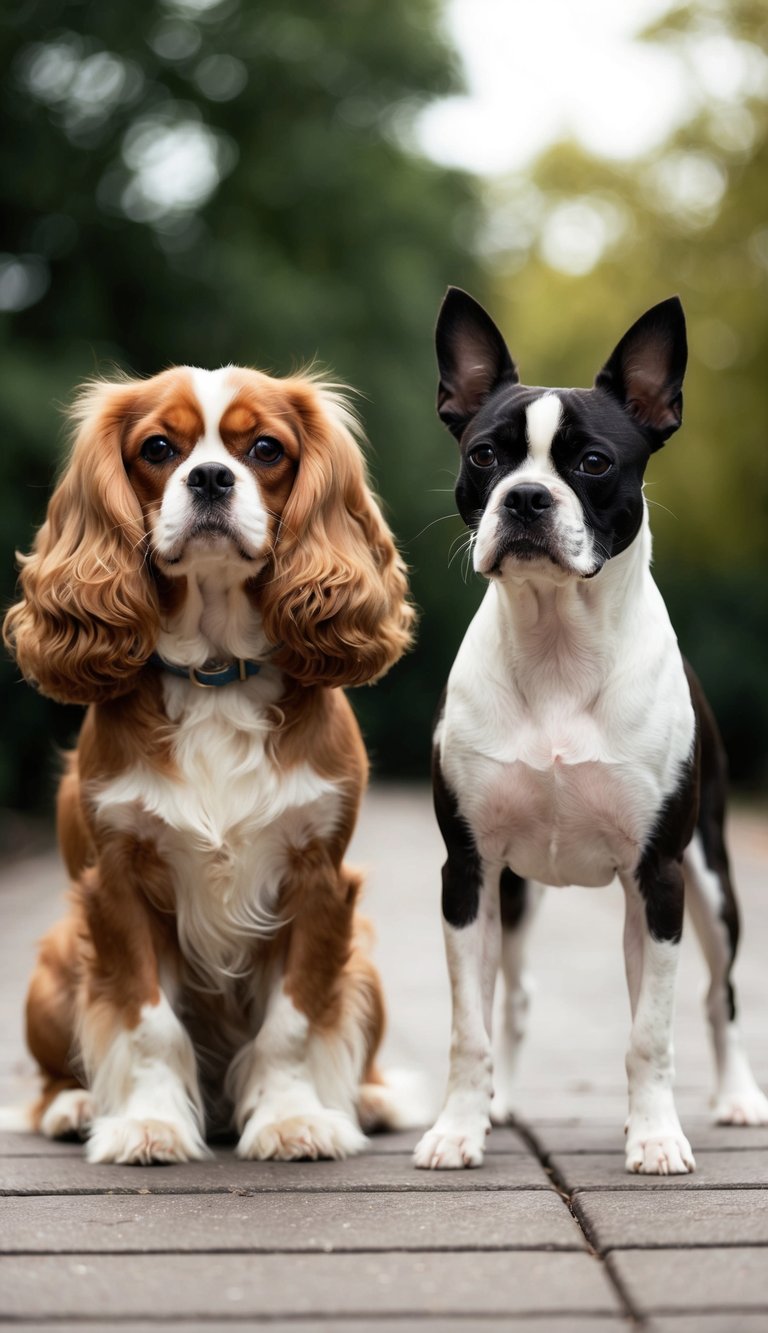
The Cavalier King Charles Spaniel and Boston Terrier come from totally different places and backgrounds. Each one’s story is kind of fascinating, with unique twists and turns that shaped what they’re like today.
The Story of the Cavalier King Charles Spaniel
The Cavalier King Charles Spaniel started out as a royal lapdog in Britain. Back in the 1600s, King Charles I and II adored these spaniels, which is how they got their name.
You’ll spot them in old paintings, perched on the laps of noblewomen. Over time, breeders tweaked the look, aiming to recreate the spaniels in those classic portraits.
By the early 20th century, the modern Cavalier King Charles Spaniel emerged—a small lap dog with a friendly nature and a silky coat. The Kennel Club officially recognized the breed in the mid-1900s.
Cavaliers have stuck around as gentle, affectionate pets, still charming people with their sweet personalities.
The Heritage of the Boston Terrier
The Boston Terrier’s story begins in America, specifically Boston, Massachusetts, in the late 1800s. Breeders crossed the English Bulldog with the now-extinct White English Terrier.
Some lines also mixed in a bit of French Bulldog. Breeders wanted a smaller, more manageable bulldog-type dog with a softer temperament.
That’s how the Boston Terrier came to be—compact, energetic, and super friendly. The breed quickly became a favorite in city homes.
Boston Terriers are famous for their tuxedo-like markings and bright, round eyes. These days, people love them for their playful spirit and loyalty.
Comparison With Other Notable Breeds
Compared to other small breeds, Cavaliers and Boston Terriers each have their own thing going on. Cavaliers are related to classic lap dogs like the English Toy Spaniel, and people often compare them to Toy Poodles or Yorkies because of their soft coats and size.
Boston Terriers, on the other hand, are closer to the English Bulldog and French Bulldog in their background. They’ve got that muscular build and smooth coat, but they’re usually more energetic than the average Cavalier King Charles Spaniel.
Both breeds have carved out their own spot as companion pets, shaped by their unique histories.
Physical Characteristics and Appearance
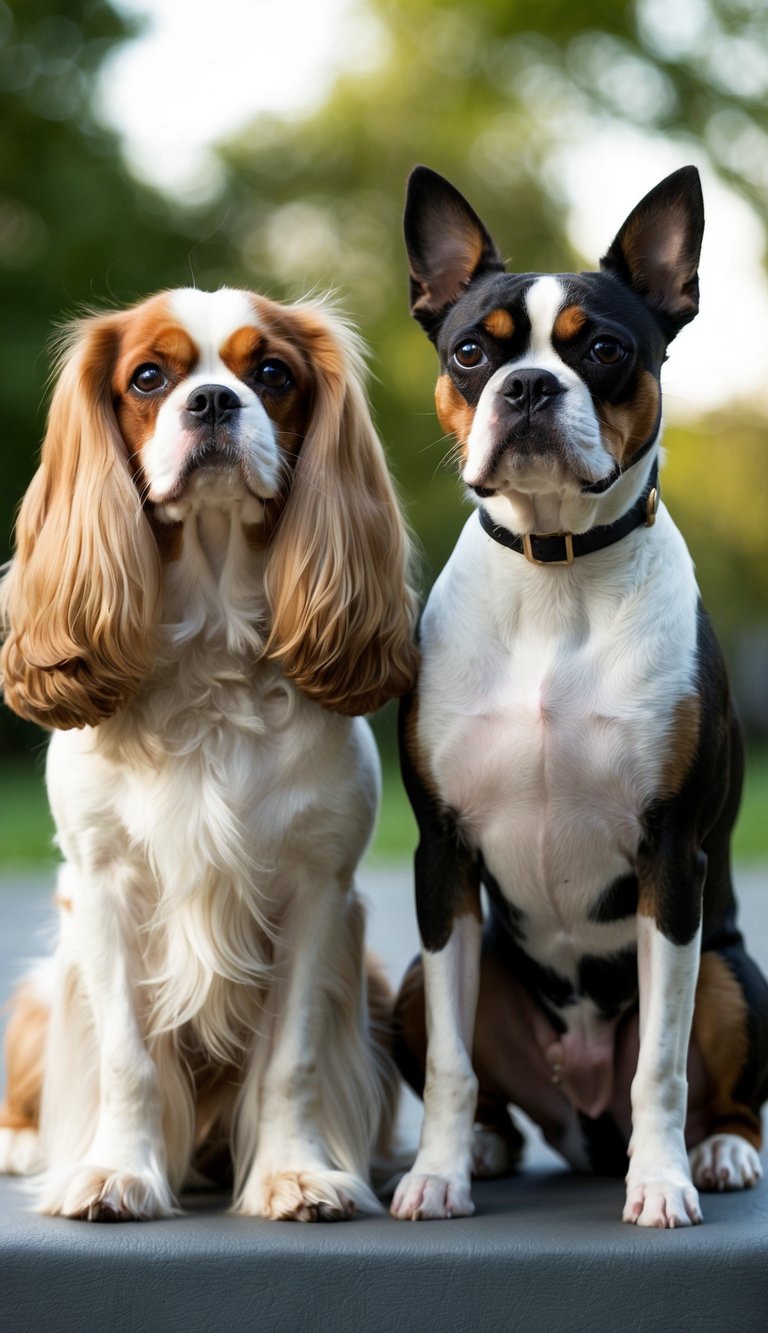
Cavaliers and Boston Terriers are both small, but you’ll notice some clear differences in their looks. Size, shape, and especially those faces—each breed has its own style.
Size and Weight
Cavalier King Charles Spaniels are a bit bigger than you might expect for a toy breed. Most adults weigh between 13 and 18 pounds, standing about 12 to 13 inches tall at the shoulder.
They look elegant, with a frame that’s a touch longer than it is tall. That makes them easy to handle and carry.
Boston Terriers are solid little dogs. They usually weigh 12 to 25 pounds and stand 15 to 17 inches tall.
Their bodies are muscular and square, so they feel sturdy when you pick them up. If you want to see the size difference side by side, check out the Boston Terrier vs Cavalier King Charles Spaniel size guide.
Coat and Colors
Cavalier King Charles Spaniels have a silky, medium-length coat. It’s soft, sometimes a little wavy, and has feathering on the ears, chest, and legs.
Their coats come in four main colors: Blenheim (chestnut and white), tricolor (black, white, and tan), ruby, and black & tan.
Boston Terriers have short, smooth coats that are super easy to care for. Their fur almost never mats.
The classic Boston look is black, brindle, or seal with white markings—like a little dog in a tuxedo. They shed less than Cavaliers, so if you want a low-maintenance grooming routine, Bostons are a solid option.
Facial Structure and Brachycephalic Traits
The Cavalier King Charles Spaniel has a rounded head, long floppy ears, and those big, expressive eyes. Their muzzles are short but not flat, so their faces look gentle and welcoming.
Boston Terriers, though, have that classic brachycephalic (short-nosed) look. Their faces are flat, eyes wide and round.
This makes them adorable, but it can cause breathing issues, especially when it’s hot or after a lot of play. They might snort, wheeze, or overheat more easily than other breeds.
If you’re curious about these facial differences, you can read more here.
Temperament and Personality
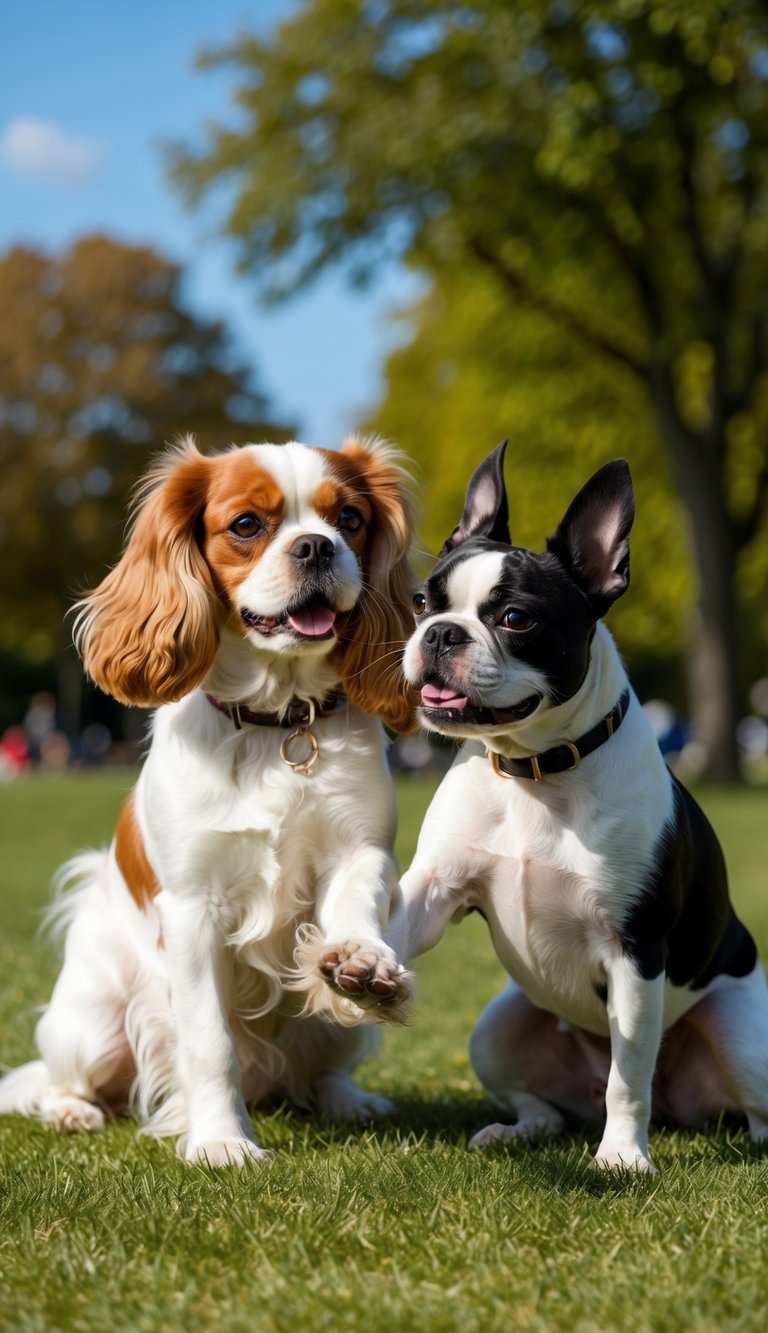
Both breeds are friendly, but they show it in different ways. Their personalities, energy, and how they mesh with families can really help you decide which breed fits your home best.
Cavalier King Charles Spaniel Disposition
Cavaliers are gentle, affectionate, and eager to please. They crave attention and thrive when they’re close to their people.
Most Cavaliers are easygoing, happy to be petted or cuddled, and make fantastic emotional support pets. They’re usually quiet and adapt well to apartments or houses.
Aggression is rare, and they tend to get along with kids, strangers, and other animals. Cavaliers are sensitive and intuitive—they seem to know when you’re down and will try to comfort you.
They really don’t like being left alone for long. If you’re gone a lot, they can get anxious.
Boston Terrier Behavioral Traits
Boston Terriers are lively and friendly, with a playful spark that’s hard to miss. They’re alert, smart, and love being part of the action.
Bostons want to be included in family routines and games. Their clownish antics can keep you entertained.
They’re more energetic compared to Cavaliers, so they need playtime or walks to burn off steam. Regular exercise and mental challenges help keep them happy.
Some Boston Terriers can be stubborn, especially during training. Early socialization and consistent routines help a lot.
They’re sensitive to your mood and tone, so gentle, positive training methods work best.
Suitability as Family Pets
Both breeds make excellent family pets, but your lifestyle might lean you toward one or the other.
Cavaliers love calm environments, listen well, and are patient with kids and seniors. Their affectionate nature and size make them a safe choice for families with gentle children.
Boston Terriers shine with active families who can keep up with their energy. They’re social and adjust to city or suburban life.
Sometimes, their playful side can be a bit much for tiny kids, but they’re usually gentle and protective.
If you want a mellow cuddle buddy, Cavaliers are hard to beat. If you’re after a playful, energetic pal, Boston Terriers are a great pick.
Training and Socialization
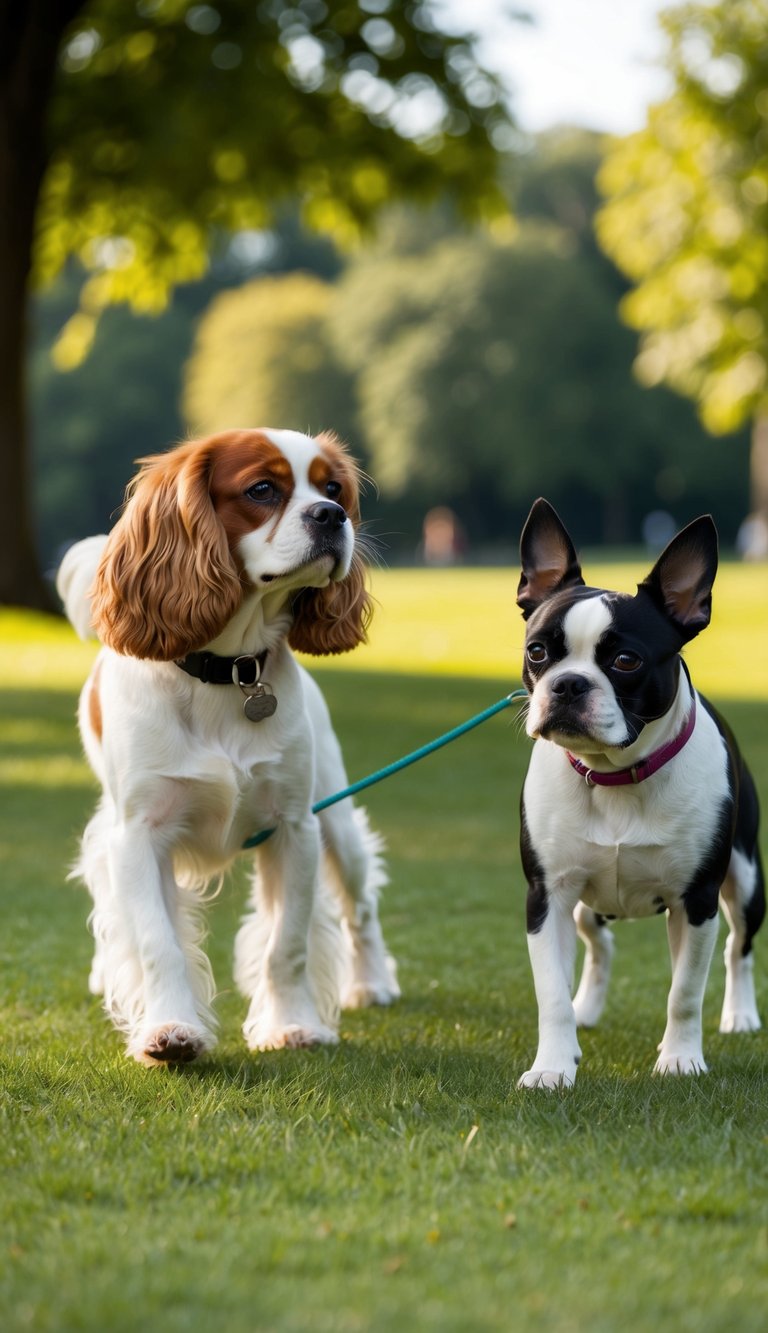
Cavaliers and Boston Terriers are both popular family dogs, but they don’t always learn the same way. Knowing their quirks can make training smoother.
Trainability and Intelligence
Cavaliers want to please you and respond well to positive reinforcement. They learn quickly, especially when you keep training sessions short and use treats or praise.
Sometimes, Cavaliers get distracted by scents or noises, so a gentle, steady approach helps.
Boston Terriers are smart and energetic. They usually pick up commands fast, but they can be a bit stubborn.
Clear commands and upbeat, frequent training sessions hold their attention. Start early to prevent unwanted habits.
If you’re curious about how they stack up in intelligence and training style, check this comparison.
A few quick tips for both breeds:
- Start training early
- Use positive methods like treats, toys, or praise
- Be consistent and patient
Socialization Needs
Cavalier King Charles Spaniels are naturally friendly with people and other animals. Still, they need early socialization to grow into confident adults.
Introducing them to new people, sounds, and experiences helps prevent shyness or anxiety. Letting them explore the world safely makes a big difference.
Boston Terriers are outgoing but sometimes act wary around unfamiliar dogs. Well-managed socialization from puppyhood lowers the risk of aggressive or fearful behavior.
Playdates, park visits, and meeting a variety of people build their confidence. These experiences help them become more adaptable and less anxious.
Expose your puppy to different situations in a safe, controlled way. Joining a puppy class gives them supervised play and learning with other dogs.
Exercise and Activity Requirements
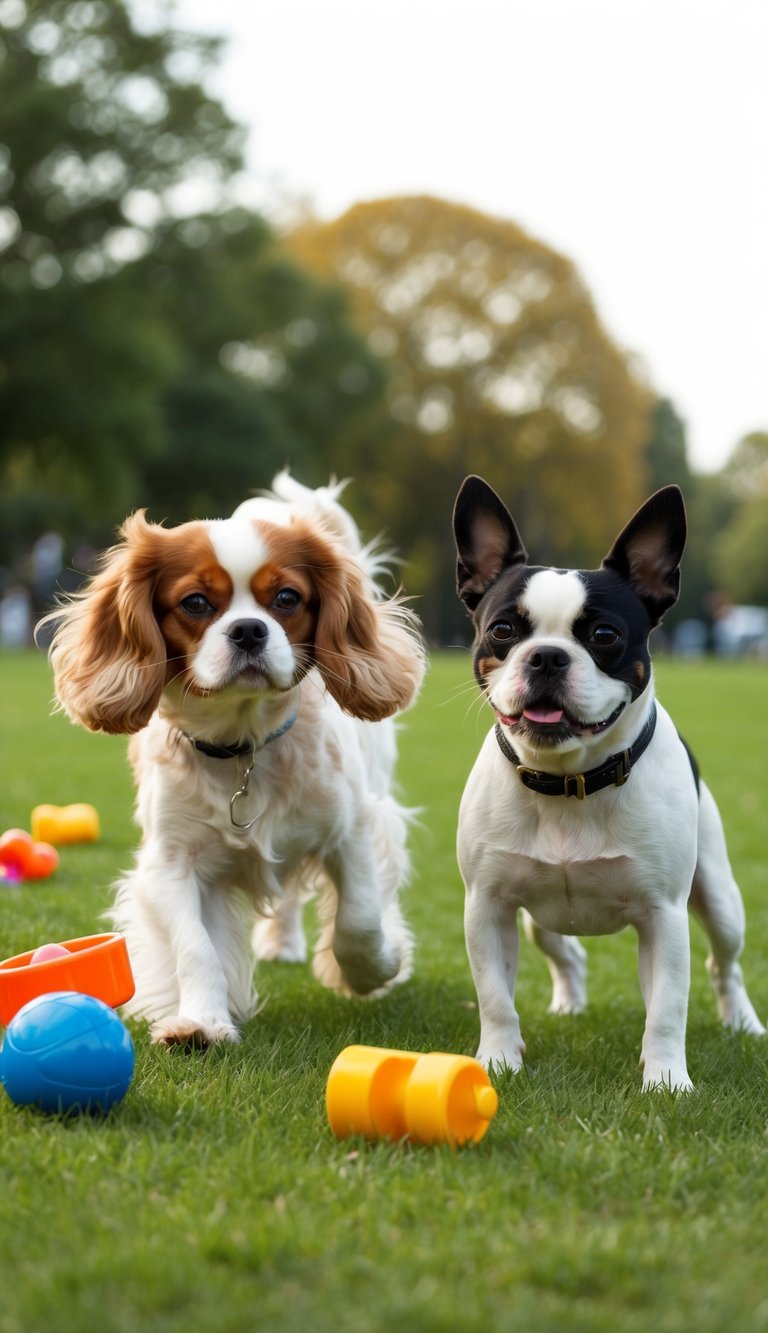
Both the Cavalier King Charles Spaniel and Boston Terrier need daily exercise and mental engagement. Their activity levels and play preferences do differ, so it’s worth knowing what each breed enjoys.
Daily Physical Needs
The Cavalier King Charles Spaniel enjoys walks and active play but doesn’t demand extreme exercise. Around 30 to 60 minutes a day usually keeps them happy.
This can mean gentle walks, backyard fetch, or playing with other dogs. They’re adaptable and tend to follow your routine, but they might get lazy if you don’t encourage them.
The Boston Terrier also likes daily walks and staying active. They have moderate energy and show bursts of playfulness.
A couple of short walks and some playtime work well for them. Because of their short noses, heavy exercise or heat can be tough, so don’t overdo it in hot weather.
You can read more about their exercise needs or compare them here.
Here’s a quick comparison:
| Breed | Exercise Time Needed | Intensity | Special Notes |
|---|---|---|---|
| Cavalier King Charles Spaniel | 30-60 min/day | Low to Medium | Adaptable, gentle play |
| Boston Terrier | 30-60 min/day | Moderate | Avoid extreme heat or overdoing |
Mental Stimulation
Mental enrichment matters just as much as physical exercise. The Cavalier King Charles Spaniel enjoys interactive toys, simple training routines, and social time.
Teaching them new tricks or letting them solve puzzle feeders helps prevent boredom. It also cuts down on unwanted behavior.
The Boston Terrier is smart and loves problem-solving games, short training sessions, and busy toys. Try treat-dispensing toys, hide-and-seek, or short nose work activities.
They respond really well to positive attention and praise. Regular engagement strengthens your bond and keeps them content.
Mix up activities and toys to keep things interesting. Dogs get bored too—changing it up helps a lot.
Health and Lifespan
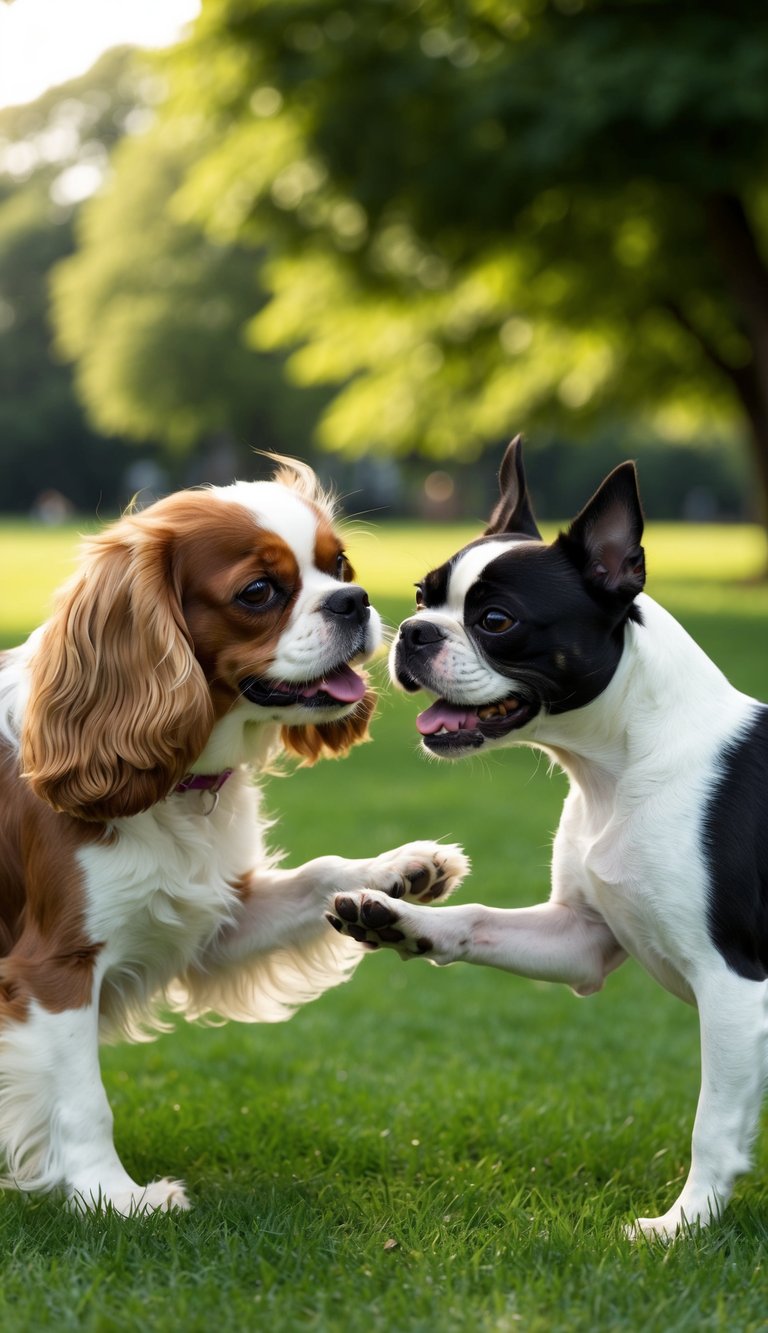
Both the Cavalier King Charles Spaniel and Boston Terrier have distinct health profiles and common concerns. It’s worth considering these factors as you choose which breed fits best with your lifestyle.
Common Health Issues
Cavalier King Charles Spaniels often face heart problems, especially mitral valve disease. This condition is very common and can start young.
They’re also prone to issues like syringomyelia (a painful neurological disorder) and ear infections because of their floppy ears. It’s not rare to see these problems pop up.
Boston Terriers are brachycephalic, meaning they have short noses and flat faces. This shape makes them prone to breathing troubles, especially in hot or muggy weather.
You might notice eye problems in Bostons too—cataracts or corneal ulcers can happen due to their big, round eyes. Both breeds can develop patellar luxation (knee problems) and some joint issues.
Regular vet check-ups help catch and manage these conditions early.
Common problems at a glance:
| Breed | Key Health Issues |
|---|---|
| Cavalier King Charles Spaniel | Heart disease, syringomyelia, ear infections |
| Boston Terrier | Breathing problems, eye disorders, joint issues |
Life Expectancy
The average lifespan of a Boston Terrier is about 13 to 15 years. They usually live a bit longer if they avoid major breathing or heart problems.
Cavaliers tend to live around 9 to 15 years, with many reaching their teens if managed well. Boston Terriers average 13 years, while Cavaliers have a slightly lower average—about 11.8 years.
Some Bostons with severe respiratory issues may not live as long. For Cavaliers, heart disease is the most common reason for early passing.
Special Health Considerations
If you pick a Boston Terrier, keep in mind the challenges that come with brachycephalic breeds. Their short snouts can cause snoring, noisy breathing, and a higher risk for heat stroke.
You’ll need to watch your Boston Terrier closely in hot weather and avoid strenuous exercise during the hottest part of the day. It’s just not worth the risk.
Cavalier King Charles Spaniels need breeders to screen carefully for heart disease and syringomyelia. If you get your Cavalier from a responsible breeder who tests for these issues, you reduce the risk, but you can’t totally remove it.
Regular heart checks and symptom monitoring are crucial. Both breeds need routine vet visits for dental care, vaccinations, and early detection of any problems.
Adopting from breeders who do regular health screenings can help you avoid some inherited diseases. Food, exercise, and regular grooming also play a big role in keeping your dog healthy.
Grooming and Maintenance
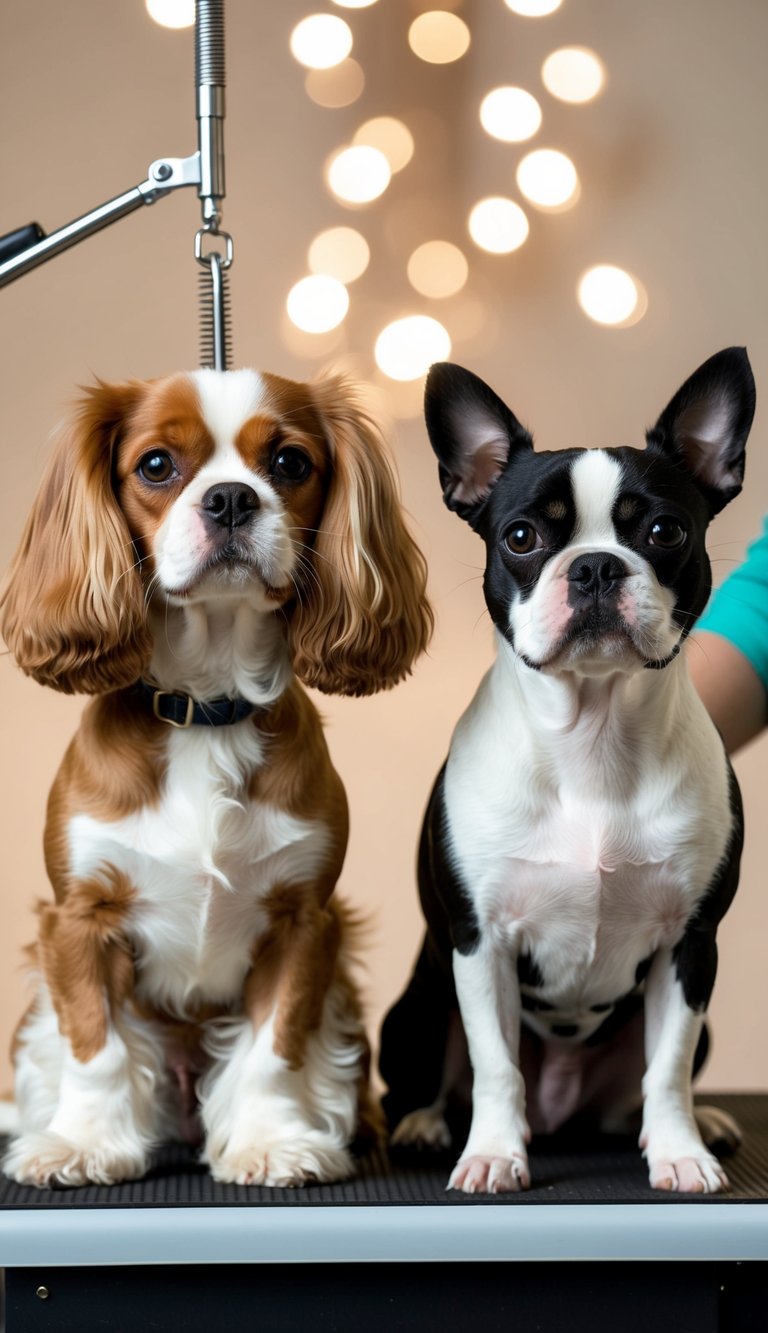
Grooming needs matter when you’re choosing between the Cavalier King Charles Spaniel and the Boston Terrier. Their coat types, shedding, and routines can suit different lifestyles.
Coat Care
The Cavalier King Charles Spaniel has a medium-length, silky coat that tangles easily. You should brush their coat every few days to keep it smooth and knot-free.
A slicker brush or a comb for fine hair works well for them. It’s not a huge chore, but you’ll want to keep up with it.
The Boston Terrier has a short, smooth coat that barely needs maintenance. Brushing once a week is usually enough to remove dead hair and keep their coat shiny.
Their short hair means you spend less time on grooming, which is great if you’re busy. Regular brushing also helps you spot ticks, fleas, or skin irritation.
While Cavaliers need more frequent care, Boston Terriers are known for being low-maintenance.
Shedding and Allergens
Cavalier King Charles Spaniels shed moderately all year. You’ll notice fur on your furniture and clothes, especially in spring and fall.
They’re not hypoallergenic, so if allergies are a concern, keep that in mind. Boston Terriers shed much less than Cavaliers.
Their short coat drops a little hair and doesn’t make as much mess. Still, no dog is completely hypoallergenic, and Boston Terriers can cause reactions in sensitive people.
To manage shedding, brush both breeds regularly and keep your home clean. If you have mild allergies, you might find the Boston Terrier easier to live with.
Other Grooming Needs
Cavalier King Charles Spaniels need regular ear cleaning because their floppy ears can trap dirt and moisture. Their long hair around the ears and paws picks up debris, too.
Trim their nails every few weeks to keep them comfortable and avoid foot problems. Boston Terriers don’t have as many ear issues, thanks to their upright ears, but you should still check for dirt or redness.
Bathing every few months, or as needed, works for both breeds. Their skin can dry out if you wash them too often.
Dental care is a must. Brush their teeth several times a week with dog-safe toothpaste. It reduces bad breath and helps prevent dental disease, keeping your pup happy.
Compatibility With Children and Other Pets
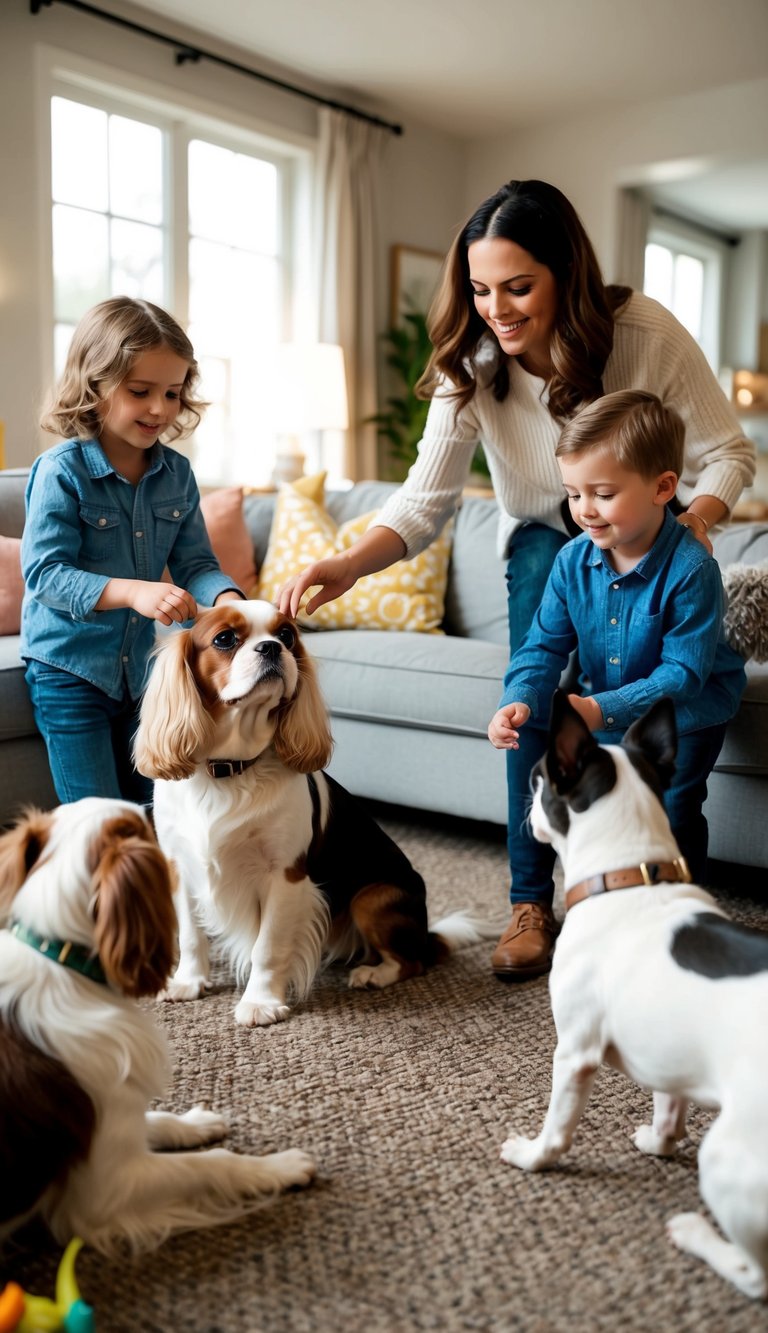
Both the Cavalier King Charles Spaniel and Boston Terrier are known for their gentle nature and friendly attitude. If you’ve got kids or other pets, these breeds can adapt well and become loving family members.
Interaction With Children
The Boston Terrier is very kid-friendly. They love playtime, show patience, and usually do great around children of all ages.
Their playful nature makes them a fun choice for families. But, since they’re small, you should supervise during rough play to prevent accidental injuries.
Cavalier King Charles Spaniels are gentle and affectionate. They love attention and cuddling, making them strong companions for young kids.
They’re less energetic than Boston Terriers but tend to be more tolerant of children’s behavior. Both breeds love being part of a family and joining in activities.
For more on family-friendly traits, check out this Cavalier King Charles Spaniel vs Boston Terrier comparison.
Compatibility With Other Animals
Cavalier King Charles Spaniels usually get along well with other dogs and even cats. Early socialization helps, but they’re adaptable and not likely to act aggressively.
Regular, supervised introductions to new animals create a peaceful home for multiple pets. Boston Terriers do fine with other dogs if socialized from a young age.
They can be a bit territorial sometimes, but they’re not usually aggressive. Small pets, like rabbits or rodents, might trigger their prey drive, so be careful there.
Both breeds respond well to calm, consistent training around other animals. If you already have pets, these breeds can learn to share their space.
Learn more about their ability to live with pets by exploring this Boston Terrier vs Cavalier King Charles Spaniel guide.
Suitability for Different Lifestyles
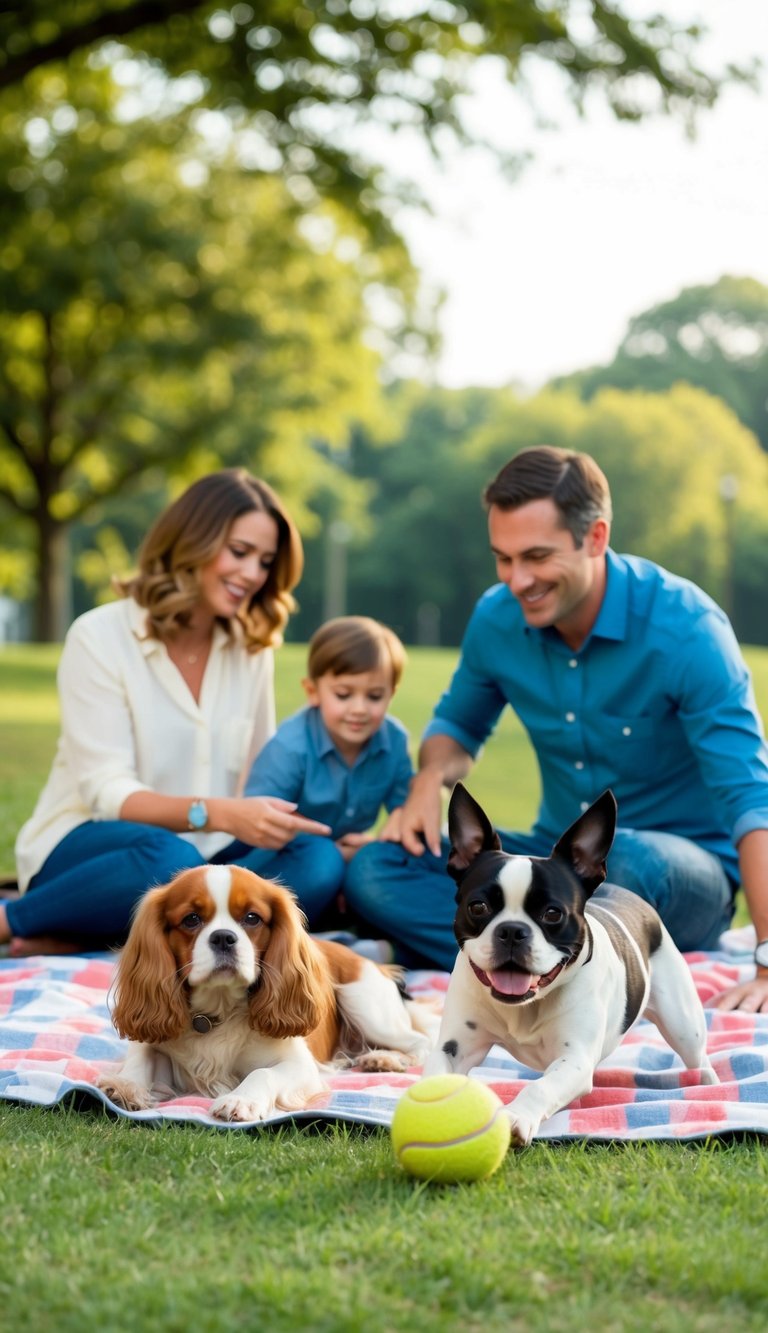
Both Cavalier King Charles Spaniels and Boston Terriers fit well in family homes. Still, their needs and personalities make one a better match than the other for some living situations or owners.
Key differences in adaptability and temperament play a big role in daily life with these breeds.
Urban vs. Rural Living
If you live in an apartment or in the city, both breeds can adjust surprisingly well. Their small size and moderate exercise needs help a lot.
The Boston Terrier stands about 15–17 inches tall and weighs between 12–25 pounds. That’s a great fit for compact spaces.
They need regular walks and some playtime. Thankfully, they don’t demand a big yard.
Cavalier King Charles Spaniels adapt easily, too. They usually get along with other pets and can settle into apartments or homes without big yards.
Both breeds need daily activity. Neither is known for being super high-energy, so city living works for most families.
If you’re out in the country with lots of space, both breeds will enjoy exploring outdoors. Still, you’ll need to keep an eye on them.
Cavalier King Charles Spaniels tend to be a bit more curious and might chase things, so secure fencing is a good idea. Boston Terriers, with their short noses, really shouldn’t be left outside in extreme weather—especially when it’s hot.
Learn more about how these breeds adapt at the Cavalier King Charles Spaniel vs Boston Terrier Comparison.
First-Time Owners
If you’re a first-time dog owner, both breeds have their own strengths. The Cavalier King Charles Spaniel is often a favorite for new owners because of its gentle nature and eagerness to please.
Training usually goes smoothly. Their friendly personality helps them fit into most families.
Boston Terriers are also friendly and gentle. They can build strong bonds with their humans and are generally easy to train, though they might be a little stubborn at times.
Their short coat and small size make grooming a breeze. Day-to-day care is pretty straightforward.
Health is something first-timers should consider. Boston Terriers can have breathing problems because of their short noses, so they need extra care in hot or humid weather.
Cavaliers sometimes have heart issues, so regular vet checkups are a must.
If you want more details about choosing between these two for your first dog, check out the Boston Terrier and the Cavalier King Charles Spaniel for first-time owners.
Breed Popularity and Recognition
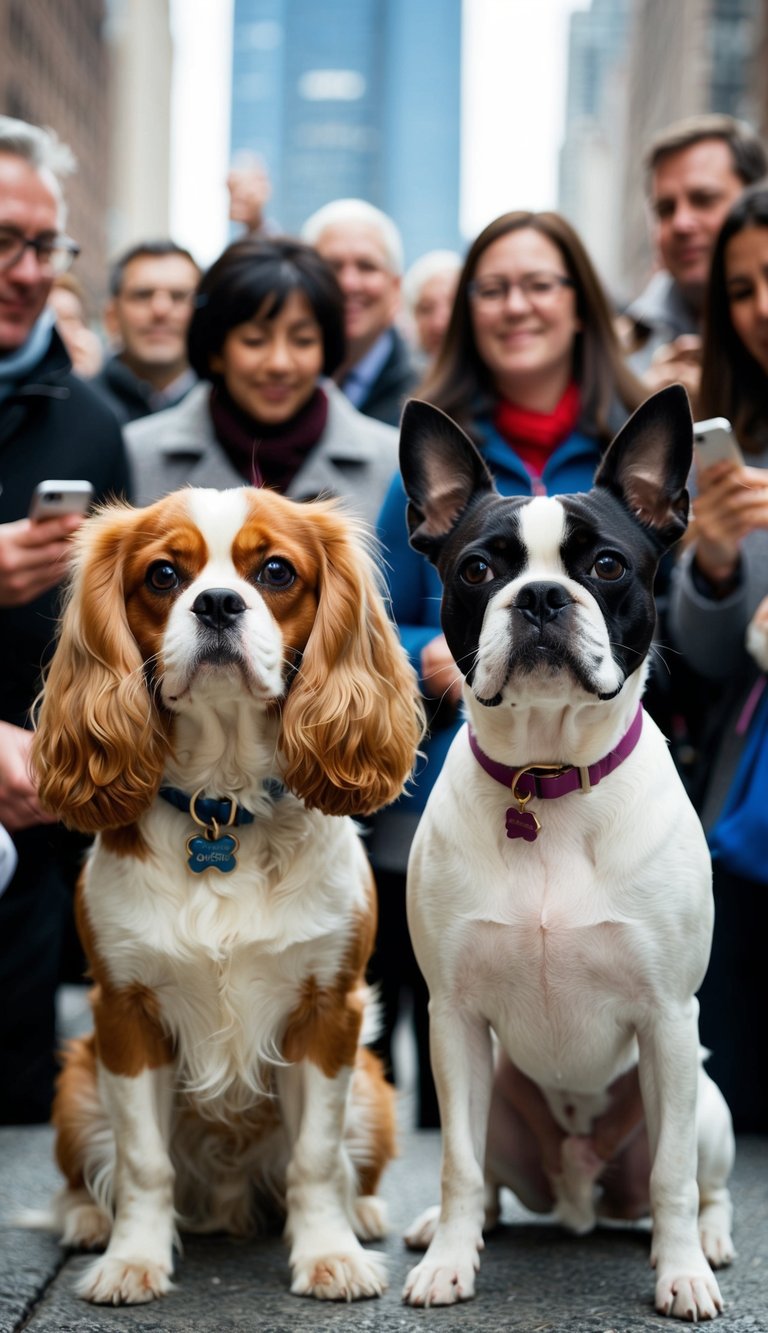
Both the Cavalier King Charles Spaniel and Boston Terrier are well known by major kennel clubs, including the American Kennel Club (AKC).
The Cavalier King Charles Spaniel is a classic family favorite. Its friendly personality and timeless looks keep it high on dog popularity lists in the U.S.
The Boston Terrier is also a city favorite. Its compact size and lively temperament make it a top pick for apartment dwellers.
You’ll spot both breeds in AKC’s yearly rankings. According to the latest info, both breeds regularly land among the most popular dog breeds in the United States.
Breed Recognition Table
| Breed | Recognized By AKC | Commonly Found In |
|---|---|---|
| Cavalier King Charles Spaniel | Yes | Family Homes, Suburbs |
| Boston Terrier | Yes | Urban Areas, Cities |
Quick List of Recognition:
- AKC approved both breeds years ago.
- Both breeds show up at competitions all the time.
- You’ll see them featured in all sorts of dog clubs and events.
Whether you go with the Cavalier King Charles Spaniel or the Boston Terrier, you’re picking a breed with plenty of fans and a solid reputation.
Comparison Summary: Which Breed Is Right for You?

Picking between a Cavalier King Charles Spaniel and a Boston Terrier really comes down to your lifestyle and what you want out of a dog.
Temperament:
- Cavalier King Charles Spaniels are gentle and affectionate. They love being lap dogs and sticking close to their people.
- Boston Terriers are lively and playful. They’re always up for games and usually want to be in the middle of family activities.
Energy Level:
- Cavaliers tend to be calm and fit right in with a laid-back home.
- Boston Terriers have more energy and need a bit more exercise, so they’re a solid pick for active families.
Trainability:
- Both breeds are smart and pick up commands pretty well.
- Boston Terriers, with all that energy, sometimes need a bit more consistent guidance.
Family Pets:
- Cavaliers usually get along with kids and other pets.
- Boston Terriers are friendly too, but can be a little more excitable around small children or new animals.
| Trait | Cavalier King Charles Spaniel | Boston Terrier |
|---|---|---|
| Size | Small | Small |
| Coat | Long, silky | Short, smooth |
| Grooming Needs | Moderate | Low |
| Exercise Needs | Moderate | High |
| Life Expectancy | 12-15 years | 11-13 years |
How much time do you really have for walks, play, and grooming? If your idea of a perfect evening is snuggling on the couch, the Cavalier might be your match. But if you’re always up for a hike or a game of fetch, the Boston Terrier could be just right.
You can dive deeper into the traits of each breed at Dog Learn—check out their Boston Terrier and Cavalier King Charles Spaniel comparison for more details.

